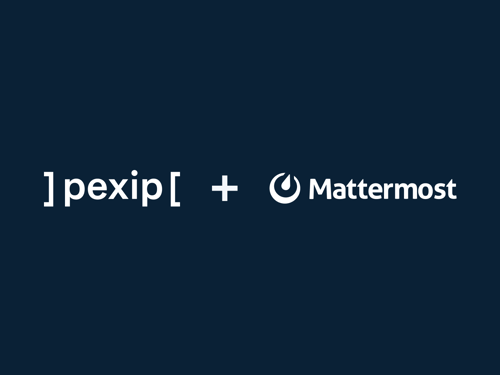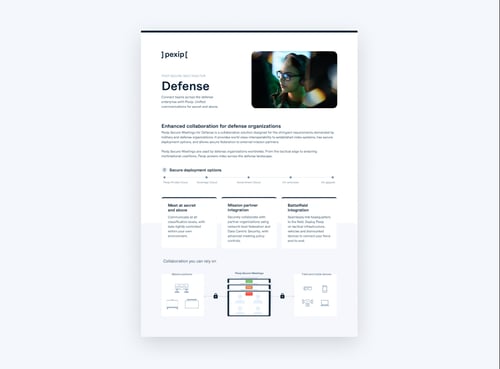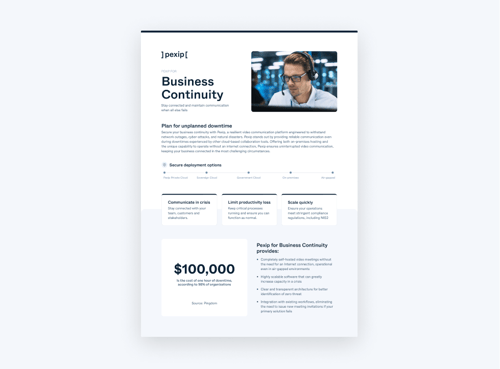The way defense organizations share and protect information is evolving. Wars of the future will be fought alongside allies and partners, meaning military and government agencies must rethink how they control and provide access to sensitive data. Traditional network-centric security, which locks down entire infrastructure to protect information, is no longer agile enough for today’s complex defense operations. At Pexip and SiXworks, an IBM company, we see a more effective approach: data-centric security.
From network-centric to data-centric security
For decades, security strategies have focused on securing the network – building fortified perimeters and creating dedicated, closed environments where information can be shared safely. But the challenge comes when partnerships evolve, new actors enter the picture, or classified data needs to be selectively shared – like a tap you can turn on and off. Under a network-centric model, this often means weeks of work setting up secure infrastructure, delaying the urgent collaboration that modern defense requires. The reality is that information needs to flow much quicker, with precise access controls that adapt in real time. This is where data-centric security (DCS) takes the lead.
What is data-centric security?
Instead of securing the transport layer (networks, servers, or even the applications themselves), DCS focuses on the information itself. Whether it’s intelligence reports, mission-critical video collaboration, or real-time situational updates, access is governed at the data level, with policies defining who can see, edit, or forward information, even down to the most granular level. This allows defense organizations to manage the lifecycle of shared information without being constrained by rigid network architecture.
Real-world impact of data-centric security
Imagine a nation under attack, needing to coordinate with allied forces, humanitarian agencies, and domestic emergency responders. In a network-centric world, this may require rapidly constructing and securing a shared network, a task that could take weeks. With a data-centric model, that same nation can immediately label and share critical intelligence while retaining the ability to control or revoke access as the situation evolves. The agility this provides is invaluable, as it enables defense organizations to bring in partners when needed and just as quickly remove them as the mission requires.
Data-centric security as an emerging doctrine
The shift toward DCS for Defense operations is moving beyond theory and becoming doctrine. The Five Eyes intelligence sharing alliance between Australia, Canada, New Zealand, UK and US, has published a document called ACP240, which defines data centric principles for partnering nations and seeks to define compliant architectures, policies, procedures and services required to enable Allied Data-Centric Interoperability (DCI), which is a user-focused outcome of enhanced interoperability across alliances and domains. As software specialists working with defense organizations, both Pexip and SiXworks are aligning with ACP240 to ensure our solutions support this new security paradigm.
How Pexip enables data-centric security
Pexip plays an important role in this ecosystem, operating at the policy enforcement point (PEP) within a data-centric architecture. In practical terms, this means our secure video collaboration technology integrates with an external policy decision point (PDP), allowing policy-based access for participants with federated identities into a Pexip video meeting. Pexip’s architectural flexibility means that defense agencies can apply DCS principles not just to static documents or digital products, but to real-time, mission-critical video collaboration. This ensures that video meetings, intelligence briefings, and real-time operational updates follow the same granular security policies as other classified information in the DCS environment.
The future of secure defense collaboration
By embedding these capabilities directly into mission workflows, Pexip and SiXworks are working side-by-side to help defense organizations move beyond the constraints of traditional security models. The future of secure collaboration goes beyond building more walls and barriers; it's about greater control over the access to information itself. With DCS, defense agencies can operate with confidence, knowing that sensitive information is protected no matter what it is or who needs to engage with it.
The mission is clear
In an unpredictable world, agility is everything. DCS provides the flexibility defense organizations need to collaborate, respond, and adapt, ensuring that information is an asset, not a liability.
To learn more about what we can do for defense departments, get in touch with one of our experts.
- Defense
- Meet & collaborate securely
- Secure Meetings





